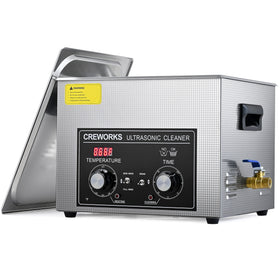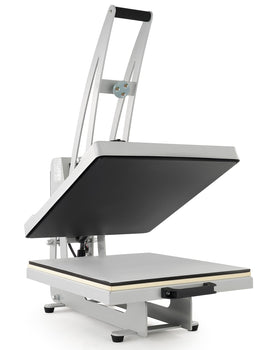With over 10000+ orders
With over 10000+ orders
Tarnished brass can make even cherished items look neglected—but restoring their shine is simpler than you think. Learning how to clean brass correctly takes less than 10 minutes and costs almost nothing.
Most brass items can be cleaned using simple ingredients from your kitchen. This guide walks you through easy methods that really work. Whether it's an old doorknob, family heirloom, or favorite piece of jewelry, you'll discover exactly how to make your brass shine like new.
Before you start cleaning, make sure you're actually dealing with brass. Many items that look like brass are actually brass-plated steel or another metal. This matters because cleaning methods for solid brass can damage plated items.
Here's a simple test anyone can do:
Grab a kitchen magnet from your refrigerator
Hold it against your brass item
If the magnet sticks, you have brass-plated steel
If the magnet doesn't stick, congratulations—it's likely real brass
You should also check if your brass has a clear protective coating (lacquer). Water will bead up on lacquered brass instead of spreading out. Most DIY cleaning methods work best on unlacquered brass.

This powerful combo cuts through tarnish quickly using items you already have. The acid in vinegar combined with salt's mild abrasiveness makes dirty brass shine again.
You'll need:
1 cup white vinegar
1 tablespoon table salt
Glass or plastic bowl (never metal)
Soft cloth
Steps:
Mix vinegar and salt in your non-metal bowl until salt dissolves
Submerge your brass completely (if possible) for 30 minutes
Rinse thoroughly with warm water
Dry immediately with a soft cloth to prevent water spots
I tried this method on an old brass door knocker, and it brightened up beautifully after just one treatment. For stubborn spots, a second soak often does the trick.
Nature's cleaning power comes through with this fresh-smelling method. This works great on lightly tarnished brass and smells much better than vinegar!
You'll need:
Half a lemon
2 tablespoons baking soda
Soft cloth
Warm water
Steps:
Cut a lemon in half and remove any visible seeds
Dip the cut side into baking soda
Rub the lemon directly on brass using gentle circular motions
Let sit for 5 minutes before rinsing with warm water
Buff dry immediately with a soft cloth
The citric acid in lemons dissolves tarnish while baking soda provides gentle scrubbing power. This combo works especially well for decorative brass items with intricate details.
Don't laugh—the tangy condiment in your fridge makes an excellent brass cleaner! Ketchup contains vinegar and acidic tomatoes that break down tarnish naturally.
You'll need:
Ketchup (any brand will do)
Old toothbrush
Clean cloth
Warm water
Steps:
Squeeze ketchup directly onto the brass surface
Let sit for 10-20 minutes (longer for heavier tarnish)
Use a toothbrush to work into detailed areas
Rinse thoroughly with warm water
Dry completely with a soft cloth
I was skeptical too, but ketchup worked wonders on my brass cabinet handles. The vinegar in ketchup does all the heavy lifting, while the thick consistency helps it cling to vertical surfaces.
For brass that's seen better days, this powerful paste cuts through years of built-up tarnish. The thicker consistency helps it stay put on heavily soiled areas.
You'll need:
1 tablespoon all-purpose flour
1 tablespoon salt
Enough white vinegar to make a paste
Soft cloth
Steps:
Mix ingredients to form a paste about the consistency of toothpaste
Apply paste generously to brass surface
Let sit for 30-60 minutes (up to overnight for severe cases)
Rinse thoroughly with warm water
Dry completely with a soft cloth
This method saved an antique brass lamp I thought was beyond help. The longer you leave the paste on, the more tarnish it removes.
Sometimes simple is best, especially for regular maintenance cleaning. Mild dish soap can remove light tarnish and prevent buildup before it gets bad.
You'll need:
Mild dish soap
Warm water
Soft microfiber cloth
Old toothbrush (optional)
Steps:
Mix 1 tablespoon soap with 1 liter of warm water
Dip cloth into soapy solution and wring out excess
Gently wipe brass surfaces (use toothbrush for details)
Rinse with clean water
Dry thoroughly with a soft cloth
This gentle method works well for items you clean regularly. For brass jewelry or frequently touched items, soap and water can be your go-to weekly cleaning method.

Brass jewelry needs special care since it touches your skin and often contains delicate components. Green marks on your skin are a sign your brass jewelry needs cleaning!
First, check for stones or pearls that could be damaged by cleaning solutions. Remove them if possible before cleaning.
For simple cleaning, make a mild soap solution with warm water and a drop of dish soap. Dip a soft cloth in the solution and gently wipe the jewelry.
For tarnished brass jewelry, try the lemon-baking soda method but apply with a cotton swab instead of directly with the lemon. This gives you more control over delicate areas.
After cleaning, apply a thin layer of clear nail polish to prevent the brass from leaving green marks on your skin. Reapply every few months for continued protection.
Store your brass jewelry in a cool, dry place, away from other metals. Consider using anti-tarnish strips or silica gel packets in your jewelry box to absorb moisture.
Further Reading: How to Clean Copper Jewelry DIY Methods and Ultrasonic Cleaning

Some brass items look so corroded you might think they're hopeless. Don't give up! Even severely tarnished brass can usually be restored with patience.
Start with a vinegar soak overnight in a sealed plastic container. The longer exposure gives the acid more time to dissolve built-up corrosion.
For brass with decades of neglect, try the flour-salt-vinegar paste method and leave it on overnight. Cover the item with plastic wrap to prevent the paste from drying out.
Never use steel wool or metal brushes, even on heavily corroded items. These will scratch the brass permanently.
If DIY methods aren't making progress after several attempts, it might be time to consider professional options or commercial brass cleaners.

While household methods work for most brass cleaning, some situations call for more high-tech solutions. Ultrasonic cleaners can reach places your scrubbing never will.
These machines use sound waves to create thousands of tiny bubbles in a cleaning solution. When the bubbles burst against the brass surface, they blast away dirt and tarnish from even the smallest crevices.
Your brass item has extremely intricate details or tiny spaces
You're dealing with a valuable antique brass collection
The item is a brass musical instrument with internal components
You've tried DIY methods with no success
Your brass has a lacquer finish (the ultrasonic waves can damage it)
The item has loose parts that could detach during cleaning
Your brass is plated rather than solid
If you don't own an ultrasonic cleaner, many jewelry stores offer cleaning services for a small fee. This can be more cost-effective than buying a machine for occasional use.

Cleaning brass is one thing, but keeping it clean is another skill entirely. These simple habits prevent tarnish from returning too quickly.
Apply a thin coat of olive oil or car wax after cleaning to create an invisible barrier against air and moisture. Just a drop spread with a soft cloth does the trick.
Store brass items away from high humidity areas like bathrooms or kitchens. Moisture speeds up the tarnishing process dramatically.
For frequently handled brass items, wipe them down weekly with a clean, dry cloth. This removes skin oils before they can react with the metal.
Consider using anti-tarnish strips in your storage areas. These paper strips absorb corrosive gases before they can affect your brass.
What is the best way to clean brass?
For most household brass, a simple vinegar and salt solution works wonders without harsh chemicals. The best method depends on your specific item and how tarnished it is. Start with the gentlest method (lemon and baking soda) and work your way up to stronger solutions only if needed.
How do you make brass look new again?
After cleaning with any method above, apply a quality brass polish and buff with a microfiber cloth until shiny. The key is thorough drying after cleaning and applying a protective coating like oil or wax. Regular maintenance prevents heavy tarnish from forming in the first place.
Does toothpaste clean brass?
Yes! Regular white toothpaste (not gel formulas) cleans brass effectively thanks to its mild abrasives. It works especially well on small brass items and jewelry. Avoid toothpastes with whitening agents or added chemicals that might react with the brass.
Does vinegar and baking soda clean brass?
Absolutely, but they work best when used separately rather than mixed together. First clean with a vinegar solution, rinse completely, then use baking soda paste on stubborn spots. When mixed directly, they neutralize each other's cleaning power.
Can ultrasonic cleaners damage brass?
When used correctly, ultrasonic cleaners are safe for solid brass items. However, they can damage lacquered finishes and may loosen components if used too long. Always use the appropriate cleaning solution and limit cleaning cycles to 3-5 minutes per session.
With these simple cleaning methods, you can bring new life to tarnished brass throughout your home. Most of the supplies are probably already in your kitchen cabinets.
Remember that regular, gentle cleaning prevents the need for deep cleaning later. A quick wipe-down every few weeks will keep your brass looking its best.
Don't be afraid to try different methods for different items. What works perfectly for a brass doorknob might not be ideal for delicate jewelry.
The satisfaction of seeing dull, tarnished brass transform into gleaming treasure makes the effort worthwhile. Happy cleaning!











